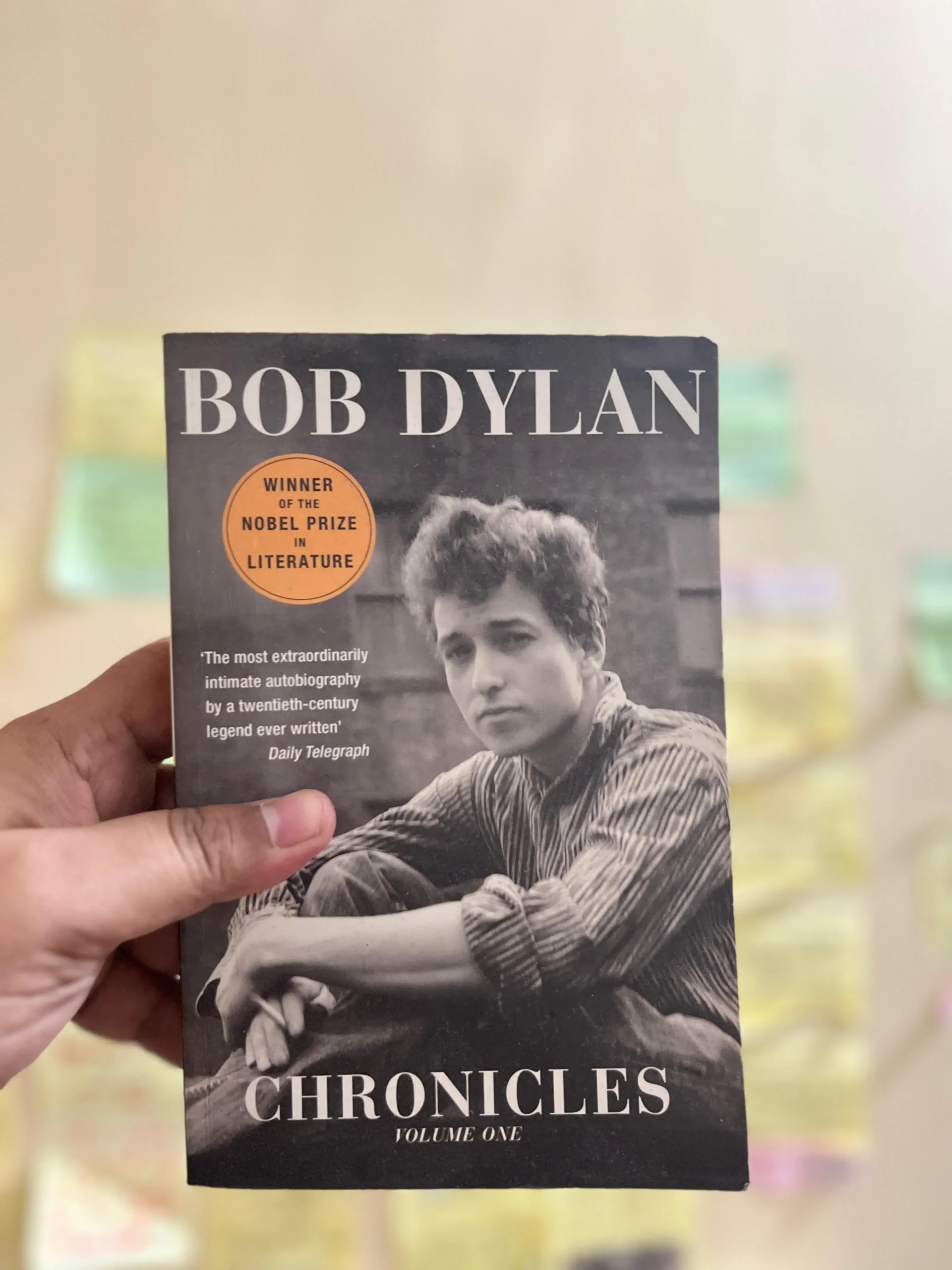
Chronicles: Volume One by Bob Dylan – A Poetic Journey Through Memory
How my Birthday Gift Opened the Door to the Mind of a Legend
Introduction: A Gift Wrapped in Silence
On my birthday last year, a dear friend, a music aficionado whose knowledge could rival any seasoned producer, placed a carefully wrapped gift into my hands.
Inside was Chronicles: Volume One by Bob Dylan.
“It’s not just a memoir,” he said, with curiosity and calm in his eyes. “It’s like walking into Dylan’s mind. You’ll love it.”
I didn’t open it right away. The book sat on my shelf for months, heavy with invisible music: smoky cafés, worn guitar strings, the ache of a restless spirit that has always seemed more myth than man.
When I finally opened it, it was less like reading and more like stepping into a dream, fragmented, vivid, and hauntingly alive.
Chronicles: Volume One and the Art of Nonlinear Storytelling
Bob Dylan’s Chronicles: Volume One refuses the tidy arc of the conventional memoir.
Instead, it unfolds like memory itself: erratic, whimsical, stitched together by feeling rather than time.
We drift from the Greenwich Village of the early 1960s to the creative paralysis of the 1980s, and back again to Dylan’s retreat into Woodstock’s snowy silence.
There are no neat chapter endings.
No signposts.
No apologies.
It is a map drawn in invisible ink.
Greenwich Village: The Alchemy of Youth
Dylan’s arrival in New York in 1961 feels like stepping into a painting that moves.
Greenwich Village hums with folk singers, beat poets, whiskey philosophers.
Here, Dylan devours Pushkin and Baudelaire, Gogol and Milton, letting their cadences slip into his bones.
There’s a hunger in these early pages, a young man certain that destiny waits around the next smoky corner.
The scenes are vivid: torn overcoats, cracked subway platforms, midnight conversations that stretch until dawn.
The Price of Being the Voice of a Generation
The mythical Dylan, voice of a restless era, emerges almost against his will.
By the late 1960s, he is exhausted, alienated, burdened by expectations he never asked to bear.
Retreating to Woodstock, he builds fences both literal and emotional, seeking refuge from a world that demands he play prophet.
Fame becomes a kind of silent war, a loneliness written in invisible ink.
Creative Crisis and the Oh Mercy Redemption
It is not the golden years that Dylan writes about most movingly.
It is the dry years.
In the 1980s, Dylan’s creative well seems to run dry.
The world shifts beneath his feet, and he struggles to find a new foothold.
Then, in New Orleans, something stirs, during the recording of Oh Mercy, small flashes of magic return.
The accidental meetings, the echo of old blues riffs, the scent of magnolias in the heavy southern air, it all feeds the fire again.
Salvation comes not from the stage, but from the smoky back rooms of forgotten music.
Chronicles: Volume One and Dylan’s Distinctive Literary Style
Dylan’s prose is a living thing,
It slouches, prowls, leaps sideways.
One paragraph aches with poetry; another darts with streetwise cynicism.
Reading Chronicles feels like riding shotgun through a dreamscape where the traffic lights flicker between reality and metaphor.
There are no traditional explanations.
No easy resolutions.
Only moments that are as sharp as flint, soft as smoke.
The Master of Evasion
Chronicles: Volume One reveals plenty but not always what readers expect.
Family life? Barely mentioned.
Religious conversions? Sketched only in passing.
The motorcycle crash? A ghost.
Instead, Dylan lays out a private map of moods, places, melodies, and books, the true compass of a creative soul.
It is a confession wrapped inside a riddle.
(How storytelling alters memory)
Reception of Chronicles: Volume One
When it was published, Chronicles: Volume One was embraced by critics and readers alike.
It won praise for its literary brilliance, its refusal to explain, its raw and textured evocations of place and time.
It was, many agreed, exactly what a Dylan memoir should be:
Wild.
Elusive.
Mesmerizing.
(New York Times Book Review of Chronicles)
The Enduring Mystery
Reading Chronicles is like listening to Dylan’s greatest songs.
You don’t walk away with answers.
You walk away with echoes.
With a feeling lodged under your ribs.
With a sudden awareness of how fragile, beautiful, and inexplicable the act of living and remembering, can be.
In refusing to demystify himself, Dylan has somehow given us the truest picture of all.
Conclusion: Listening Between the Lines
Chronicles: Volume One is not a story of facts.
It is a story of feeling.
It is the sound of footsteps fading down an alley.
It is the memory of a song you once knew by heart.
It is, like Dylan himself, a beautiful, restless thing — forever half-lit, forever beckoning us to follow.
And perhaps that’s enough.
